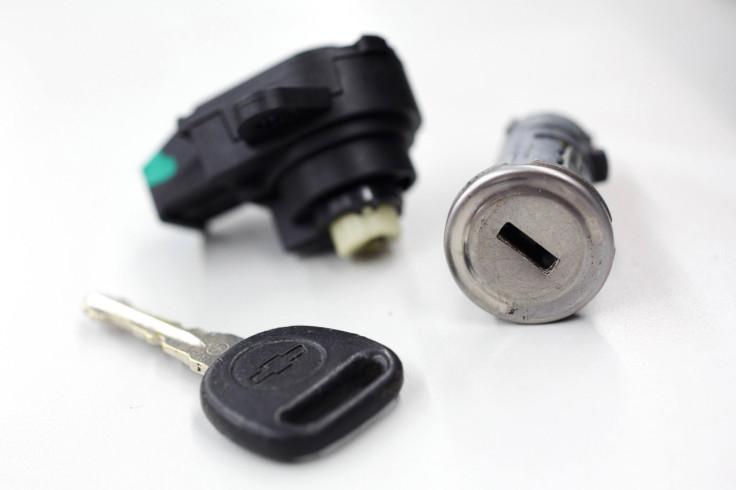Auto Safety Recalls: Car Companies Issued Average Of 2.2 US Recalls A Day In 2014, But Many Owners Ignore Recall Notices

Would you continue to drive a car you knew was the subject of a safety-related recall? For as many as half of Americans, the answer is yes. The U.S. government’s auto safety watchdog released final numbers on Thursday showing an average of 2.2 automotive recalls were issued every day in 2014. Problems ranging from incorrect spare tire labels to air-bag inflators explode like fragmentation grenades were identified in 63.95 million vehicles in 803 recalls in 2014, an all-time high for both the number of recalls and the number of vehicles affected.
But between a third and half of all auto recall notice letters are ignored by their recipients, according to John Holloran, vice president of global automotive strategy at Stericycle ExpertSolutions, a firm that helps companies handle product recalls.
“We find that the principal reason for consumers not acting on a recall notices continues to be that they didn’t perceive the issue as important, or it hasn’t been convenient for them to get the repairs done,” he said.
The auto recall response rate varies depending on the age of the car and how much press the problem gets. A 2012 Society of Automotive Engineers report showed that the newer the car, the higher the recall response rate, possibly because owners of older cars are more likely to think older cars are less likely to have safety flaws that originated on the assembly line.
Recall completion rates also vary by automaker and by how much public focus is pointed to a problem. General Motors claims a recall-completion rate of 80 percent in the first year after a recall is issued and 85 percent by the end of th second year.
In the case of the controversial and highly publicized recall last year of 2.6 million Chevrolet Cobalt, Saturn Ion and other older GM small cars for a faulty ignition switch that claimed at least 52 lives, the recall completion rate stands at almost 66 percent, according to GM spokesman Alan Adler.
“It is generally true that the completion rate on older vehicles is lower than for newer vehicles, especially those on their first owner,” Alder said in an email Friday.
Getting car owners to respond to recalls has been a persistent and complicated problem in the industry.
Even after a car owner is found, it can take months or even years before a flawed vehicle is fixed. If it changes ownership multiple times and ends up in the used car market, it may never get repaired.
This problem led the U.S. National Highway Traffic Safety Administration last year to require new mandatory labeling of recall notices, to give the envelopes the noticed are mailed in a splash of red and official government logos. Realizing that the mail system might not be adequate, NHTSA also released a smartphone app in September that allows users to plug in their vehicle information to automatically receive safety information to their devices. Companies like Stericycle are commissioned to follow-up with emails and phone calls.
So far the most effective method to get car owners to fix vehicles is to be relentless.
“The solution is consistent and frequent outreach communications to consumers using multiple methods; in addition to letters, using emails, phone calls,” said Holloran. “The communication has to be consistent and frequent.”
Other solutions that have been proffered include: sending letters by FedEx rather than ordinary mail, or making phone calls to car owners, preferably before letters are mailed to them.
Part of the problem is that consumers and automakers generally don’t differentiate among levels of risk in these flaws. A recall for a mislabeled spare-tire that could lead to over-inflation is a less risky danger than, say, unintended brake failure that could happen at any time. And some flaws are easily fixed by owners themselves. A floor mat that causes acceleration pedals to stick (as was seen in millions of Toyota vehicles in 2009) is a problems car owners might simply choose to fix themselves. But those problems are treated by automakers the same as significantly more dangerous flaws that require professional treatment, like exploding air-bag systems.
Michelle Krebs, senior autos analyst at AutoTrader.com, says there should be a better system by which car owners can be made aware of levels of risk.
“There should be some kind of system that helps consumers know how urgent the problem is, like a red light [icon] indicating the problem is serious and needs immediate attention, and a different color if it’s something that should be fixed the next time the car is taken in for maintenance,” she said. “I received a recall notice for a floor mat. Brake and air bag problems are much more urgent.”
One thing might help car owners to be more proactive on this issue: If you’ve received multiple recall notices in the mail, an automaker can use that as a legal defense if you’re injured because of a vehicle’s flaw. A court can rule that you assumed the risk of a manufacturing flaw by ignoring multiple efforts by a car company to get you into the dealership for necessary repairs.
© Copyright IBTimes 2024. All rights reserved.






















